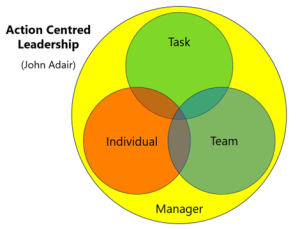A key soft skill in the workplace, is managing our own communication and how we present ourselves.
How can we navigate the balance of passive, aggressive, and assertive characteristics? Each of these traits brings its own set of challenges and opportunities, influencing the overall dynamics of professional interactions. Recognising and understanding the impact of passive and aggressive behaviours is crucial for fostering a workplace environment that thrives on assertiveness and effective communication.
In this blog, we will explore the impact of passive and aggressive behaviours and provide practical tips for fostering assertiveness and effective communication in the workplace. We will also provide industry sector examples and pitfalls to avoid for relatability and context. These examples we share are not uncommon to the ones shared by our actual customers when we are delivering a learning solution with them.
Passive Behaviour
Passive behaviour in the workplace is often marked by a reluctance to express one’s thoughts, needs, or opinions. Those exhibiting passive traits may avoid conflict, suppress their own needs, and struggle to assert themselves in decision-making processes. While being agreeable and avoiding confrontation can seem harmonious, passive people risk being overlooked. People take advantage of them; their contributions are undervalued. They can also be seen as weak, which limits career growth.
Aggressive Behaviour
On the flip side, aggressive behaviour manifests as a forceful imposition of one’s opinions and needs onto others. Aggressive individuals may prioritise their own interests without regard for the feelings or perspectives of colleagues. This approach, while momentarily forceful, often leads to strained relationships, a toxic work environment, and a breakdown in effective communication. The aggressive style may yield short-term results, but the long-term consequences can be detrimental to both personal and professional relationships and is likely to result in a high turnover of staff.
Assertiveness
Enter assertiveness, a balanced and effective approach to communication in the workplace. Assertive individuals express their thoughts and needs with clarity and confidence, without infringing on the rights of others. The assertive professional strikes a balance between passive submission and aggressive dominance, creating an atmosphere conducive to collaboration and mutual respect.
Assertiveness in the workplace is about advocating for oneself while acknowledging the perspectives and needs of others. It involves clear communication, active listening, and a willingness to compromise. An assertive individual contributes to a positive work culture by fostering an open and inclusive environment where diverse opinions are valued, and conflicts are addressed constructively.
The Advantage
Striking this balance is essential for professional growth and success. Passive individuals can benefit from developing assertiveness to ensure their contributions are recognised and valued. Learning to express opinions and set boundaries enables them to actively participate in decision-making processes and assert their worth within the organisation.
The Challenge
On the other hand, aggressive individuals can harness the power of assertiveness to temper their approach. By listening actively, considering diverse perspectives, and adapting their communication style, they can build more positive and collaborative relationships. The assertive professional understands that success is not a zero-sum game and actively seeks win-win solutions.
Conclusion
In conclusion, the workplace is a complex place where passive, aggressive, and assertive traits intersect and influence professional relationships. Recognising the impact of these behaviours is a crucial step towards fostering a culture of assertiveness. As individuals strive to find the right balance, they contribute not only to their personal success but also to the creation of a workplace environment that values effective communication, collaboration, mutual respect, resulting in productivity, efficiency, and profitability.




